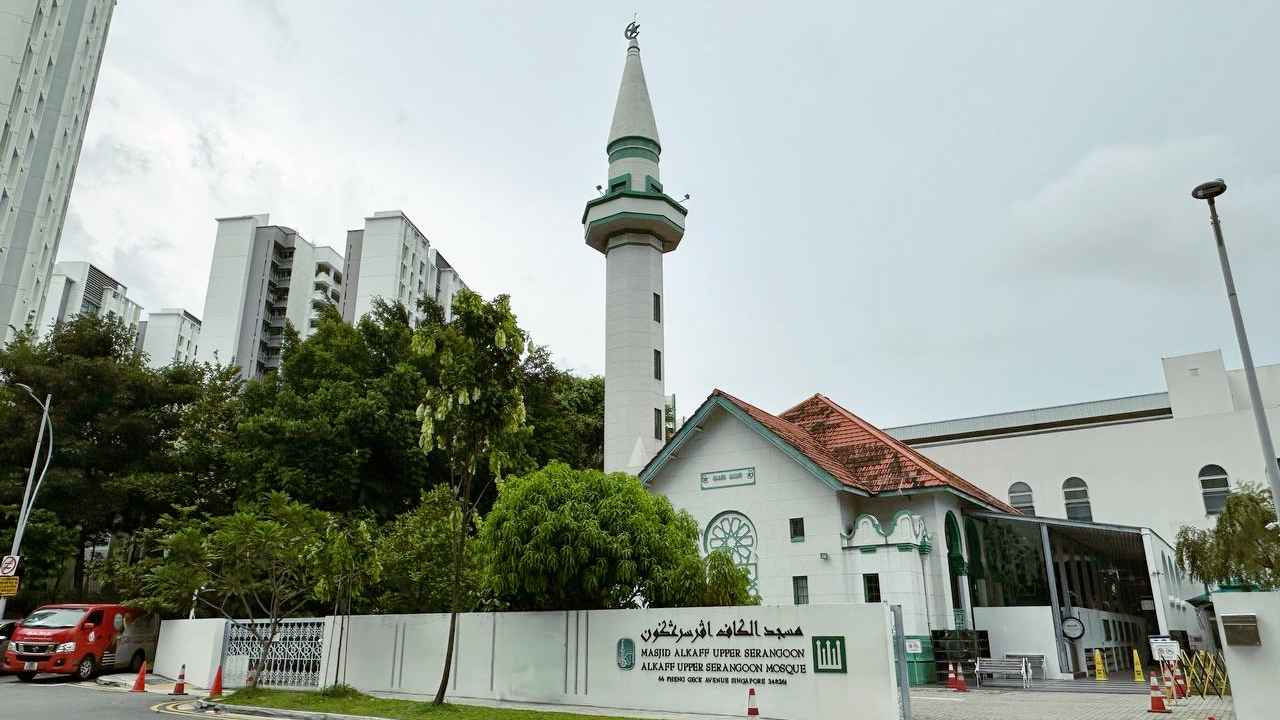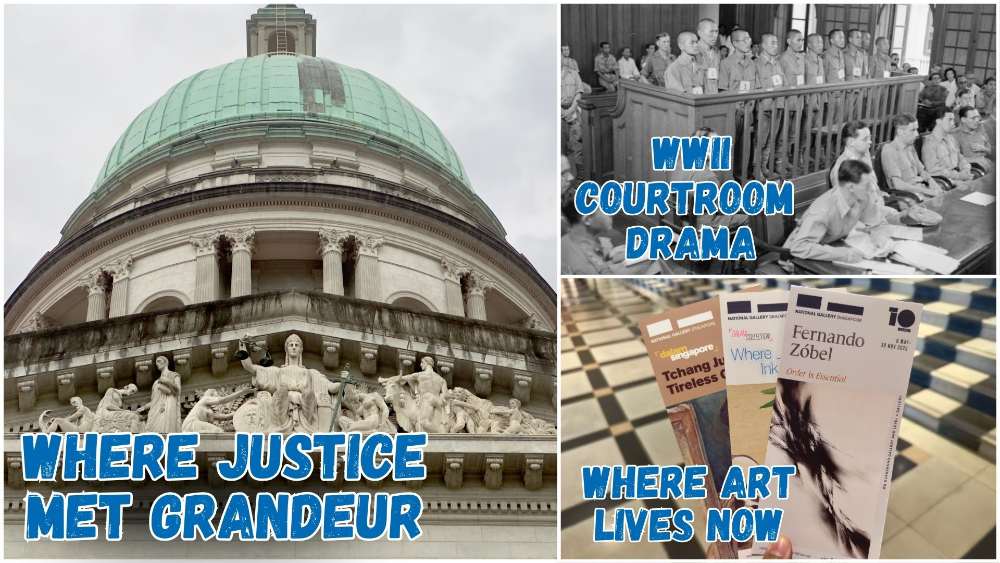National Monuments Of Singapore: Alkaff Upper Serangoon Mosque
What is a National Monument? Who gazettes them? How many national monuments are there in Singapore? To date, the Preservation of Sites and Monuments, a division of National Heritage Board, has identified and gazetted 75 buildings, structures and sites of national significance as an integral part of Singapore’s built heritage.
And we're here to tell you all about them - one National Monument at a time!
You've probably passed by or stepped into more than a few of them without realising they were National Monuments: Al-Abrar Mosque, Asian Civilisations Museum, the Civilian War Memorial, Saint Andrew's Cathedral, the Esplanade Park Memorials, Fort Siloso on Sentosa - no need to plan an itinerary for friends visiting from overseas; just show them this article ✌️
In this edition, we shine a light on one of two mosques founded by a prominent Arab family (the Alkaffs) in Singapore, Alkaff Upper Serangoon Mosque.
📍 Location
Alkaff Upper Serangoon Mosque was the 68th building to be gazetted as a National Monument. The MRT station nearest to it is Potong Pasir.
📅 Significant dates
Date built:
- 1932: Alkaff Upper Serangoon Mosque was built by the Alkaff family
Milestones:
- 24 Jun 1932: The mosque was officially opened for public worship
- March 2014: The mosque underwent renovations, expanding its prayer space to accommodate up to 2,500 people
Date gazetted: 18 Dec 2014
📜 History
Arab traders began arriving in Singapore soon after the British established a trading port (in 1819) on the island. Despite their relatively small numbers, the Arab community quickly became influential. One especially prominent family was the Alkaffs, who hailed from Wadi Hadhramaut, a region in modern-day Yemen. The family’s business thrived on the trade of spices, sugar, coffee, and textiles.
In addition to their trading ventures, the Alkaff family invested significantly in property. By the early 20th century, they were among the largest landowners in Singapore.
Their holdings included the Hotel de l’Europe, a luxury establishment once situated where the Former Supreme Court now stands, rivalling the Raffles Hotel; the Arcade Building, a stunning Moorish-style commercial building on the waterfront that was demolished in 1978; and Alkaff Mansion (today a popular destination for weddings and events), a holiday home on Telok Blangah Hill.
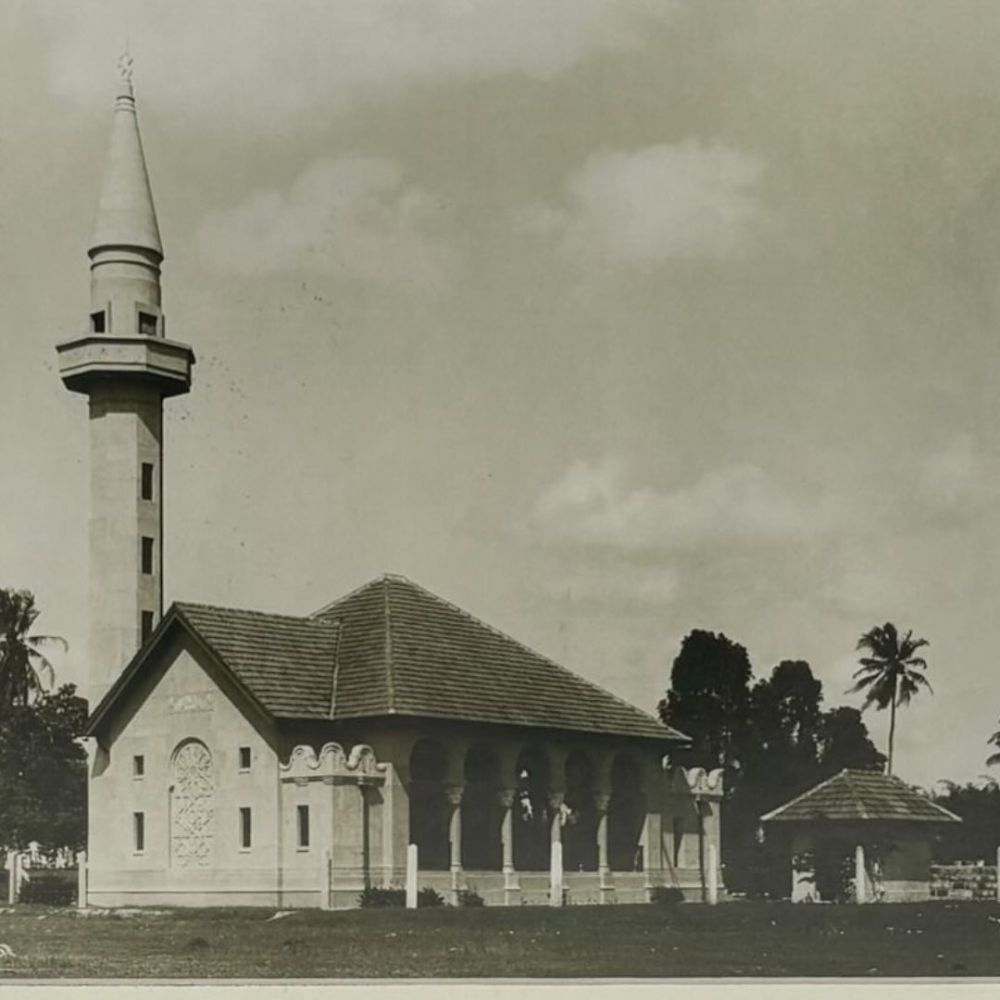 IMAGE: FACEBOOK/ALKAFF UPPER SERANGOON MOSQUE
IMAGE: FACEBOOK/ALKAFF UPPER SERANGOON MOSQUE
The Alkaffs were not only successful in business but also known for their philanthropy. They were involved in several charitable projects, such as creating the Alkaff Lake Gardens – a Japanese-themed public park – which no longer exists, and constructing two mosques. One mosque was built on Jalan Abdul Manan, and was later relocated to Bedok Reservoir Road and renamed the Alkaff Kampong Melayu Mosque. The other was situated between the former Bidadari Cemetery and Alkaff Lake Gardens and is now called the Alkaff Upper Serangoon Mosque.
The mosque was funded by Syed Abdul Rahman bin Shaikh Alkaff, the head of the Alkaff family in Singapore, and was built on land he owned. It officially opened for public worship on 24 Jun 1932.
The mosque underwent its most recent restoration in March 2014, expanding its prayer space and adding features such as ramps and a lift to improve accessibility for the elderly. A new annex was also constructed to provide classrooms and office space.
Today, Alkaff Upper Serangoon Mosque is currently overseen by the Islamic Religious Council of Singapore (Majlis Ugama Islam Singapura, MUIS).
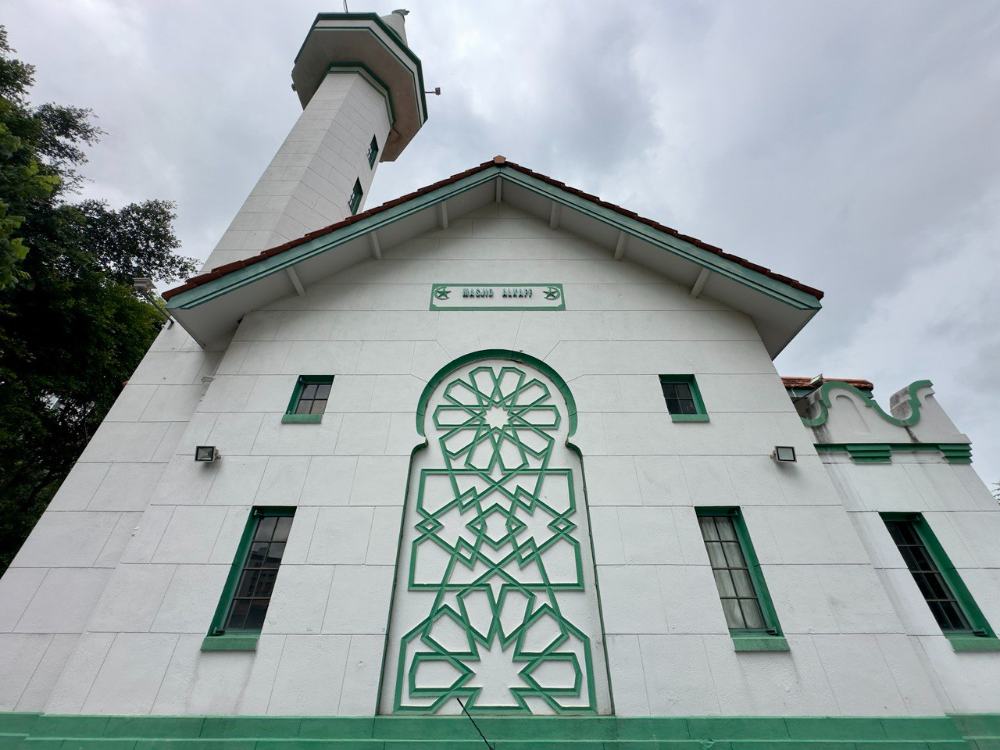 IMAGE: NG KAI
IMAGE: NG KAI
📐 Design and architecture
The design of the Alkaff Upper Serangoon Mosque was initially entrusted to the architectural firm Westerhout & Oman, with plans completed in 1927. However, the death of W. Campbell Oman, one of the firm’s partners, in 1929 delayed the project, as his partner, Johannes B. Westerhout, was unable to continue. The Alkaff family subsequently hired Swan & Maclaren, the firm behind notable designs such as the Cenotaph, Sultan Mosque, and the Former Tanjong Pagar Railway Station, to create new architectural plans.
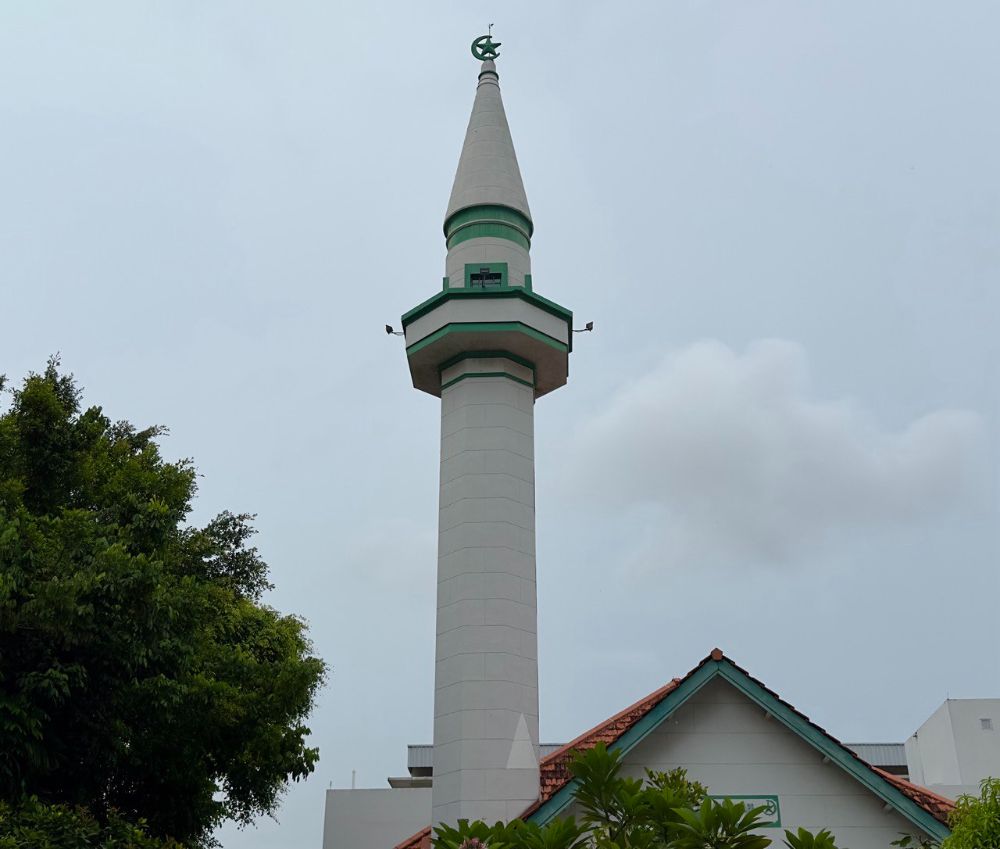 IMAGE: NG KAI
IMAGE: NG KAI
Alkaff Upper Serangoon Mosque features an eclectic blend of architectural styles. Its most striking element is the minaret, which stands out for its pencil-like shape, reminiscent of Ottoman Islamic architecture. Its minaret is unlike the ogee-shaped (dome-shaped) minarets seen at mosques like Sultan Mosque and Jamae (Chulia) Mosque.
The main prayer hall is a hypostyle (literally "under pillars") space, with rows of Moorish-style horseshoe arches supported by Corinthian-inspired columns. Neoclassical influences can be seen in the coffered ceiling (formed from recessed panels) and semi-circular fanlights above the doors.
The mihrab (a niche in the prayer hall that indicates the direction of Mecca, towards which all Muslims pray) has a multifoil arch and is flanked by twin fluted pilasters (rectangular columns), while the minbar (pulpit) in the mihrab is intricately carved from wood.
🕖 Opening hours
Regular visiting hours are from 12pm to 6pm daily.
🎟️ Admission
Entry is free. Do observe appropriate dressing and decorum. Find out more here.
For the latest updates on Wonderwall.sg, be sure to follow us on TikTok, Telegram, Instagram, and Facebook. If you have a story idea for us, email us at [email protected].







